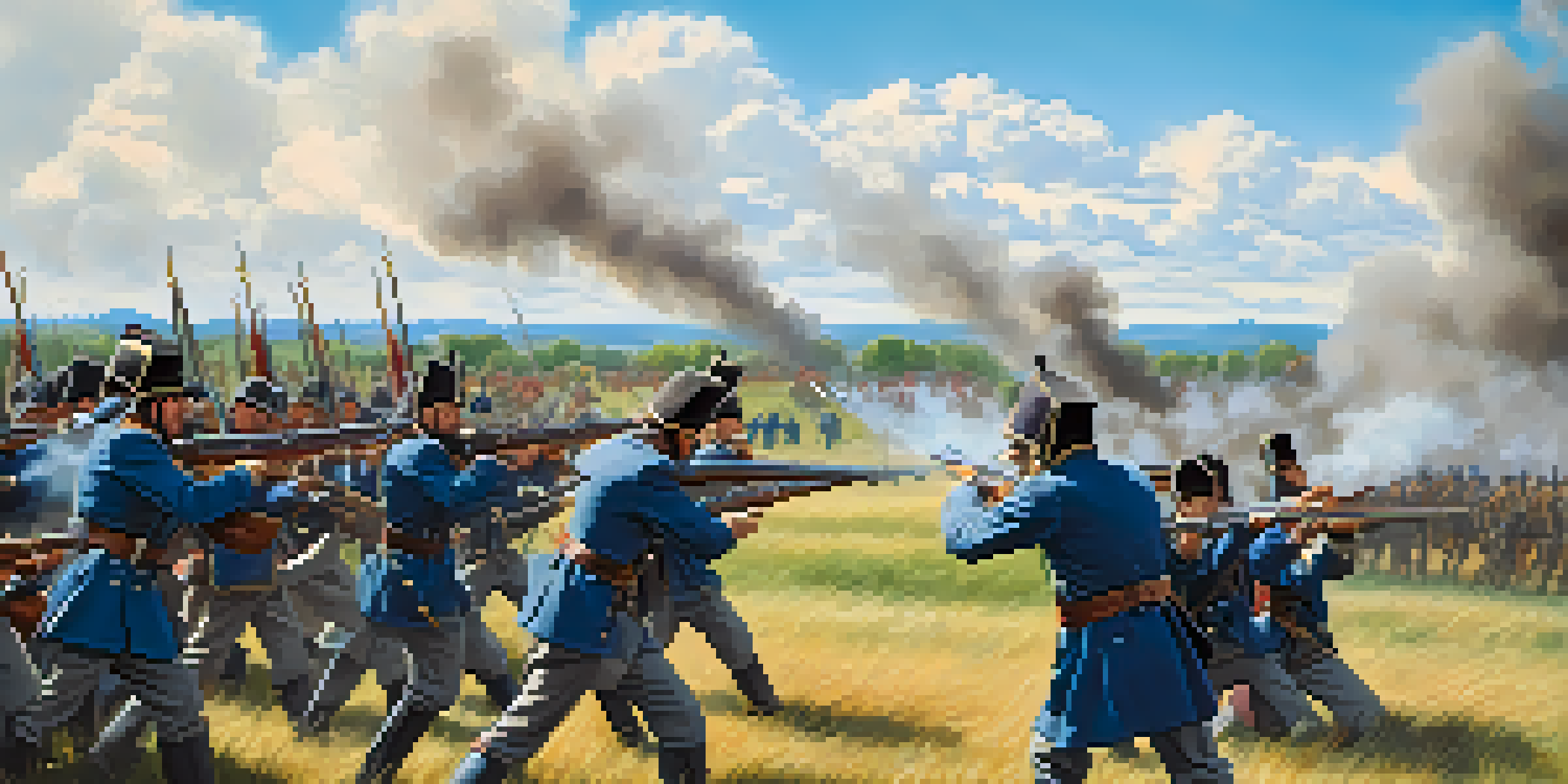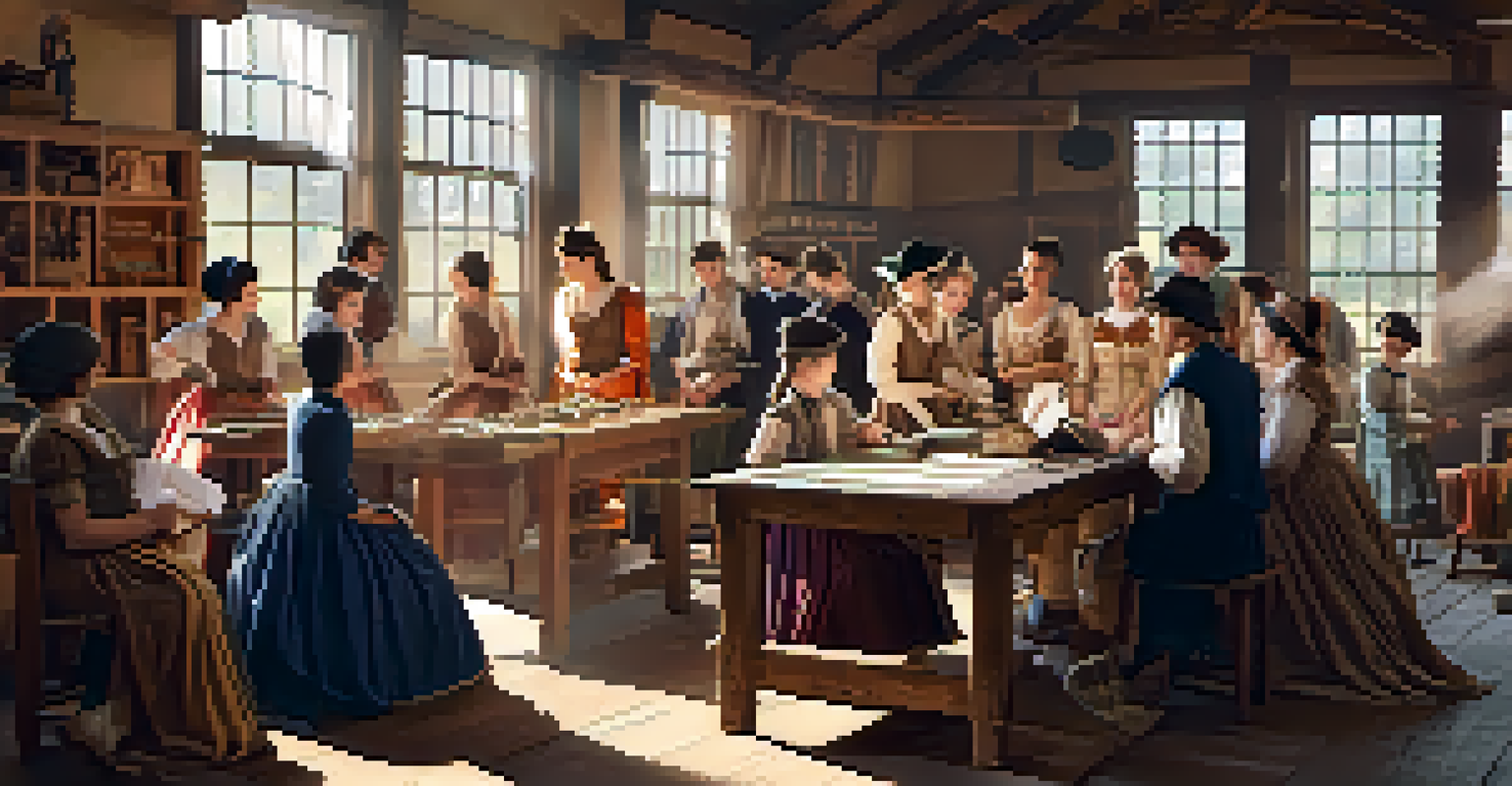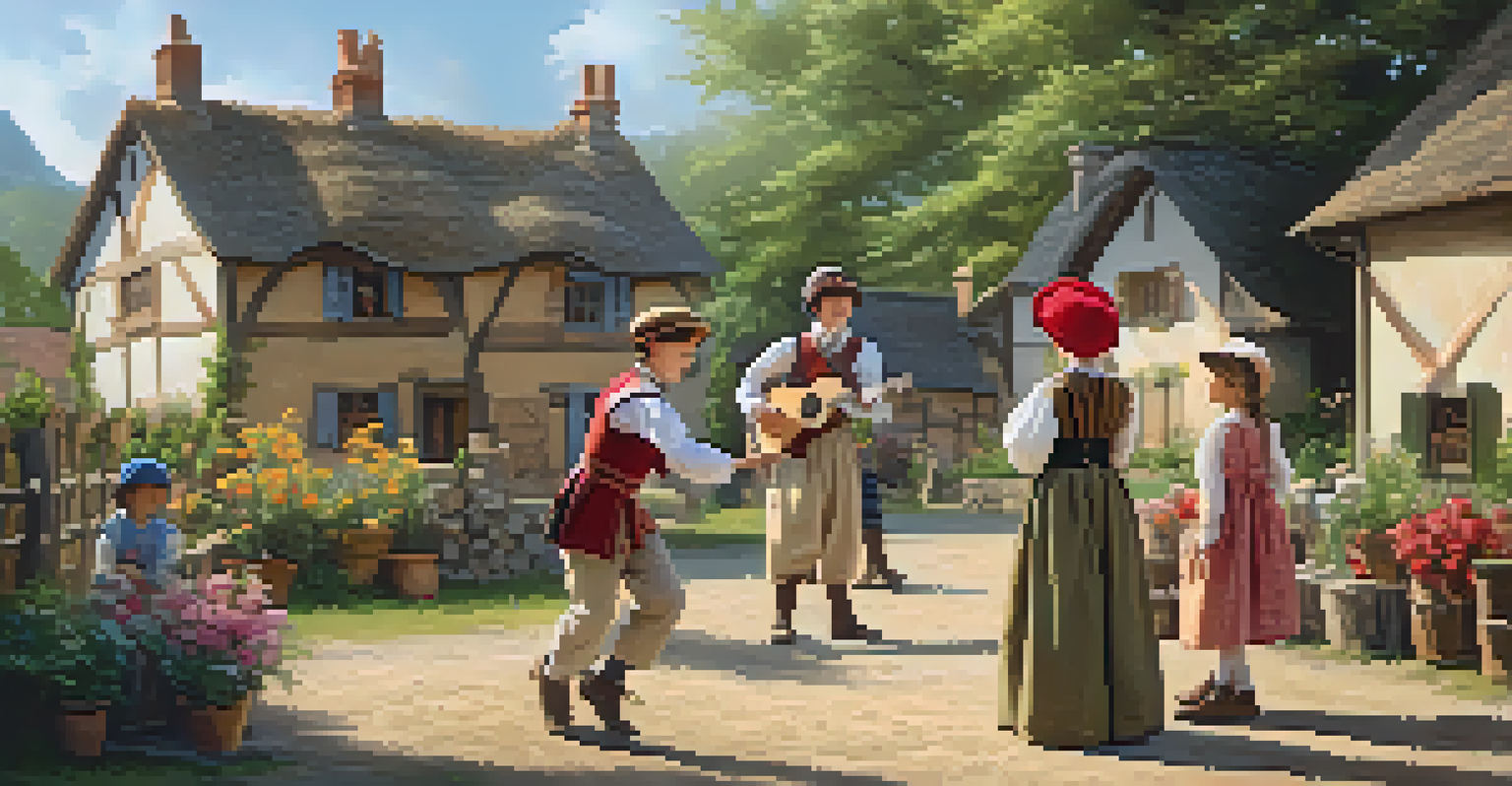Reenacting History: Balancing Fun with Educational Value

Understanding the Appeal of Historical Reenactments
Historical reenactments offer a unique way to engage with the past, allowing participants to step into the shoes of historical figures. This immersive experience not only entertains but also fosters a deeper understanding of history. People are naturally drawn to storytelling, and reenactments bring these stories to life in vivid detail.
History is not a burden on the memory but an illumination of the soul.
Many find that dressing in period costumes and participating in battles or daily life scenarios creates a tangible connection to history. This engagement can spark curiosity about the events and figures being portrayed, encouraging further research and exploration. Ultimately, reenactments serve as an entry point for many into the broader narrative of our collective past.
Moreover, the social aspect of reenactments cannot be overlooked. Participants often form tight-knit communities, sharing a passion for history and learning together. This camaraderie enhances the enjoyment, making the educational experience feel less like a chore and more like a shared adventure.
The Educational Value of Reenacting History
At their core, historical reenactments are educational tools that bring history to life. By engaging in reenactments, participants learn about the customs, language, and challenges of the time period they are representing. This hands-on approach can often lead to a richer understanding of historical events than traditional classroom learning.

For instance, a reenactor portraying a soldier during the Civil War may learn about military strategies, the realities of battle, and the societal impacts of the war. Such experiences can lead to meaningful discussions about the consequences of historical events and their relevance today. This deeper understanding fosters critical thinking skills and a greater appreciation for history.
Reenactments Enhance Historical Learning
Historical reenactments provide an immersive way to engage with history, making it more relatable and interesting for participants.
Additionally, reenacting history often encourages participants to explore primary sources and historical documents. This research process not only enhances their knowledge but also teaches valuable skills in analysis and interpretation. As a result, reenactors often emerge with a stronger grasp of historical context and significance.
Challenges in Balancing Fun and Educational Goals
While reenactments can be both fun and educational, striking the right balance can be challenging. Some participants may prioritize entertainment over educational value, leading to a focus on spectacle rather than accuracy. This can result in a skewed representation of history that does not do justice to the complexities of the past.
The more you know about the past, the better prepared you are for the future.
Conversely, an overly educational approach may deter those looking for a fun experience. If participants feel like they are in a classroom, they may lose interest and miss out on the immersive aspect that makes reenactments enjoyable. Finding ways to keep the experience engaging while still imparting knowledge is essential for organizers.
To navigate these challenges, many reenactment groups incorporate educational components into their events, such as workshops or discussions. By blending interactive elements with informative sessions, they can create a dynamic experience that appeals to a wide audience. This approach fosters a love for history while ensuring that participants walk away with valuable insights.
The Role of Authenticity in Reenactments
Authenticity plays a crucial role in the educational value of historical reenactments. Participants and organizers strive to accurately represent the time period, from clothing and weaponry to language and customs. This commitment to authenticity can enhance the overall experience, making it more immersive and meaningful.
However, achieving authenticity can be a daunting task, especially for less well-documented periods of history. Groups often rely on historical research and expert advice to ensure that their portrayals are as accurate as possible. This dedication not only enriches the reenactment but also serves as a learning opportunity for both participants and spectators.
Community and Camaraderie in History
Participants in reenactments often form tight-knit communities, sharing a passion for history that enhances the overall experience.
Moreover, an emphasis on authenticity can spark discussions about the challenges of interpreting history. Different perspectives and ongoing debates about historical events can lead to engaging conversations among participants. This dynamic exchange of ideas reinforces the notion that history is not just a set of facts but a living narrative shaped by various viewpoints.
Engaging Younger Generations in History
One of the most significant benefits of historical reenactments is their ability to engage younger generations in history. With the rise of digital entertainment, capturing the attention of youth can be challenging. Reenactments offer an interactive alternative that can captivate young minds through hands-on learning and participation.
By allowing children and teens to immerse themselves in history, reenactors can spark a lifelong interest in the subject. Activities such as crafting period costumes or engaging in role-playing scenarios can make learning feel like play. This approach helps demystify history, transforming it from a dull subject into an exciting adventure.
Furthermore, educational institutions are increasingly recognizing the value of reenactments as teaching tools. Field trips to reenactment events can provide students with a memorable learning experience that reinforces their curriculum. By bringing history to life, educators can inspire students to explore further and think critically about the past.
The Impact of Technology on Reenactments
In today's digital age, technology plays a significant role in enhancing historical reenactments. From virtual reality experiences to social media promotions, technology can broaden the reach and impact of these events. For instance, virtual reenactments have emerged as a way to engage those who may not be able to attend in person.
Additionally, technology allows reenactors to conduct more in-depth research and share their findings with a wider audience. Online forums and social media groups enable participants to connect and exchange ideas, fostering a global community of history enthusiasts. This interconnectedness can lead to more accurate and enriched portrayals of historical events.
Balancing Fun and Education
Striking the right balance between entertainment and educational goals is essential for reenactments to be both enjoyable and informative.
However, it’s essential to strike a balance between technology and the authentic experience of reenactments. While tech can enhance engagement, over-reliance on it may detract from the hands-on nature that makes reenactments special. By integrating technology thoughtfully, organizers can create a hybrid experience that respects tradition while embracing modernity.
Looking Ahead: The Future of Historical Reenactments
As historical reenactments continue to evolve, their potential for education and entertainment remains strong. The blending of immersive experiences with educational goals will likely shape the future of these events. Organizers are increasingly seeking innovative ways to make history accessible and engaging for diverse audiences.
Incorporating new technologies, such as augmented reality and interactive storytelling, could revolutionize how reenactments are experienced. These advancements may draw in even more participants, creating a vibrant community dedicated to preserving and exploring history. The future of reenactments may lie in their ability to adapt and resonate with changing societal interests.

Ultimately, the enduring appeal of reenacting history lies in its ability to spark curiosity and foster a love for learning. By balancing fun with educational value, these events can inspire generations to appreciate and understand the complexities of our past. As we look ahead, the possibilities for historical reenactments are as rich and diverse as history itself.